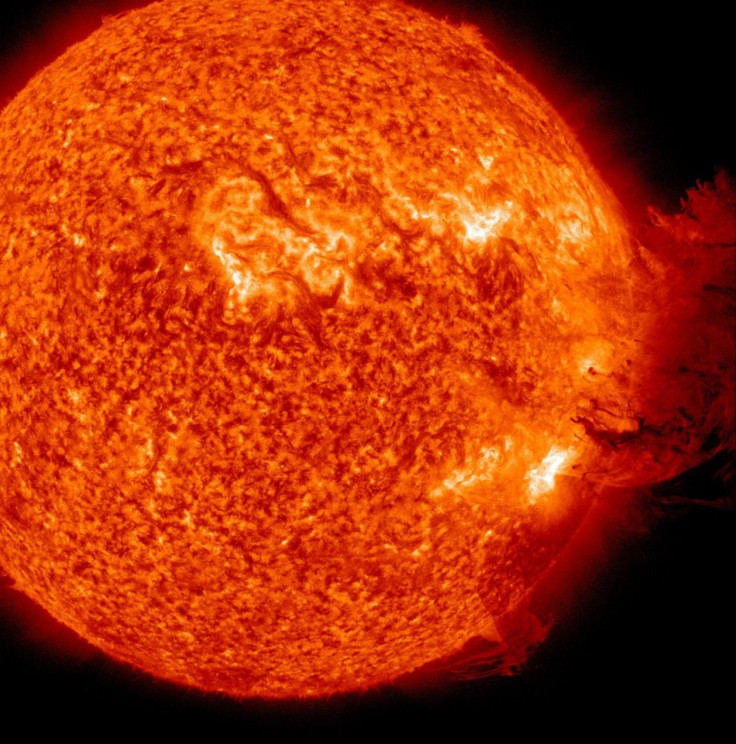Why is a Solar Flare Dangerous?

The biggest solar flare in four years is moving towards Earth at a rate of at 1400 km/s and is expected to reach early June 9.
NASA announced on June 7 the Sun unleashed an M-2 (medium-sized) solar flare, an S1-class (minor) radiation storm and a spectacular coronal mass ejection (CME).
One of the biggest questions about the solar corona is the heating mechanism. The corona is thousand times hotter than the sun's visible surface, but what heats it up is not well-understood. People have suggested that waves like this might cause turbulence which cause heating, but now we have direct evidence of Kelvin-Helmholtz waves, said Leon Ofman, solar physicist of NASA's Goddard Space Flight Center, Greenbelt, Maryland and Catholic University, Washington.
A solar flare is caused when intense burst of radiation comes from the release of magnetic energy associated with sunspots. Flares are the solar system's largest explosive events. A CME happens when the outer solar magnetic fields are closed, often above sunspot groups, and the confined solar atmosphere can suddenly and violently release bubbles of gas and magnetic fields.
Let's take a look at how it may impact Earth:
Due to the CME, a cloud of charged particles will pass by the Earth and may even affect satellite and communication systems.
While a strong solar flare increases the chance of a spectacular light show, the electromagnetic pulse can also disrupt power grids and radio traffic when it passes the Earth. Some industries that are usually affected by solar flares include electrical power grid companies, airlines, GPS, military and ocean shipping routes.
This radiation storm did not squarely blow to Earth, but it should deliver a glancing blow to Earth's magnetic field during the June 9th.
The strongest solar storm on record is called the Carrington Event, which is named after Richard Carrington who viewed and reported on the solar flare of September 1st. It occurred in late August and early September of 1859. From August 28th through September 4th, aurorae of unusual brilliance were observed throughout the globe.
If a Carrington-type flare hit today, then a large fraction of the satellites in orbit may be permanently damaged, leading to a communications blackout and potential chaos.
Auroras
Meanwhile, The Geophysical Institute of the University of Alaska Fairbanks predicts higher auroral activity for Thursday. The auroras would be visible overhead from Inuvik, Yellowknife, Rankin and Igaluit to Juneau, Edmonton, Winnipeg, Thunder Bay and Sept-Iles. The visibility might be low on the horizon from Seattle, Des Moines, Chicago, Cleveland, Boston, and Halifax.
For the Northern Hemisphere, the aurora should be visible mainly in North America, since the sun is illuminating most of the auroral zone in Russia and Scandinavia. If the timing is right, the disturbance will lead to auroras visible from the Northern US on Wednesday night, the institute predicted.
For Friday, the institute expects moderate auroral activity that would be visible overhead from Inuvik, Yellowknife, Rankin, and Igaluit to as far south as Whitehorse, Ft. McMurray, James Bay. The visibility might be low on the horizon as far south as Prince Rupert, Calgary, Minot, Bemidji, Stevens Point, Traverse City and Quebec City, Canada.
© Copyright IBTimes 2024. All rights reserved.





















